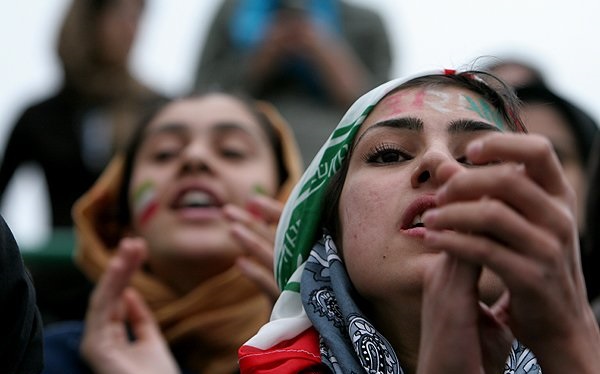By Hugh Beattie
The Iranian football team recently attracted some attention in Qatar, not just because of the games they played in, but also because the players did not sing the Iranian national anthem before the game with England. Their brief protest reminds us that after three months of demonstrations it seems that the government has still not got a grip on the widespread protests that began in September following the death of the young Kurdish Iranian woman, Mahsa Amini, on September 16, in hospital in Teheran following her arrest by the Guidance Patrol, known as the Morality Police.
There have of course been serious demonstrations against the government before – in 2009 and 2019 for example, but these were relatively easily crushed.
Rejection of the headscarf has become an important feature of the current protests. Women’s dress has been a controversial issue in Iran for many years, becoming a central symbol during the culture wars between more secular and more religious sections of Iranian public opinion. In 1936, as part of efforts to modernise the country, the government of Shah Reza Pahlavi brought in the Mandatory Unveiling Act which made it illegal for women to wear a veil. For some years the law was harshly enforced; one reason for what the historian Nikki Keddie calls ‘a later pro-veil backlash’ (Keddie 1981). When serious protests broke out against the government of Shah Muhammad Pahlavi (Shah Reza Pahlavi’s son) in 1978, wearing a cloak (chador) which covers the whole body became a symbol of women’s resistance to the Shah and his Westernising government. After the overthrow of the Shah and the establishment of the Islamic Republic in 1979, women were required to dress modestly. When they left the home they had to wear a manteau, a kind of overcoat, and a headscarf to cover their hair. Wearing a chador was not actually compulsory, but even the manteau and the headscarf have become increasingly unpopular during the past few years. In passing it is interesting to note the contrast with Turkey, where during the 1980s the headscarf was actually banned in public institutions, universities among them, and women have continued to argue that this is unfair and that those who want to wear it should be allowed to do so (like in this example).
To return to Iran, the Tony Blair Institute recently published an opinion poll from Iran with some interesting findings –
- of the women interviewed 74 per cent opposed the compulsory wearing of the hijab (a headscarf that covers the head and neck; hijab can also refer to clothing that covers the whole body apart from hands and face) as did 71 per cent of men.
- 84 per cent of those respondents wanted ‘regime change’.
Perhaps the most surprising result was that 76 per cent considered that religion did not play an important part in their lives (source).
In response to the ongoing demonstrations in various parts of the country, government forces have so far killed more than 400 people and detained around 16,000 others. But two weeks ago, the Iranian Attorney General seemed to make a concession to the protestors when he announced that the Guidance Patrol, which enforces the laws on dress and personal behaviour, would be suspended. Roya Hakakian, however, suggests that the current protests are about more than the headscarf, and that the government’s recent suspension of the Guidance Police will not be sufficient to satisfy the protestors (see the recent piece in The Atlantic). Certainly, the Iranian singer-songwriter Shirvin Hajipour refers to a wide range of grievances in his song Baraye (with English translation), which has been referred to as the anthem of 2022 protests.
Keddie, Nikki R. (1981) Roots of Revolution An Interpretive History of Modern Iran. (New Haven and London: Yale University Press).

